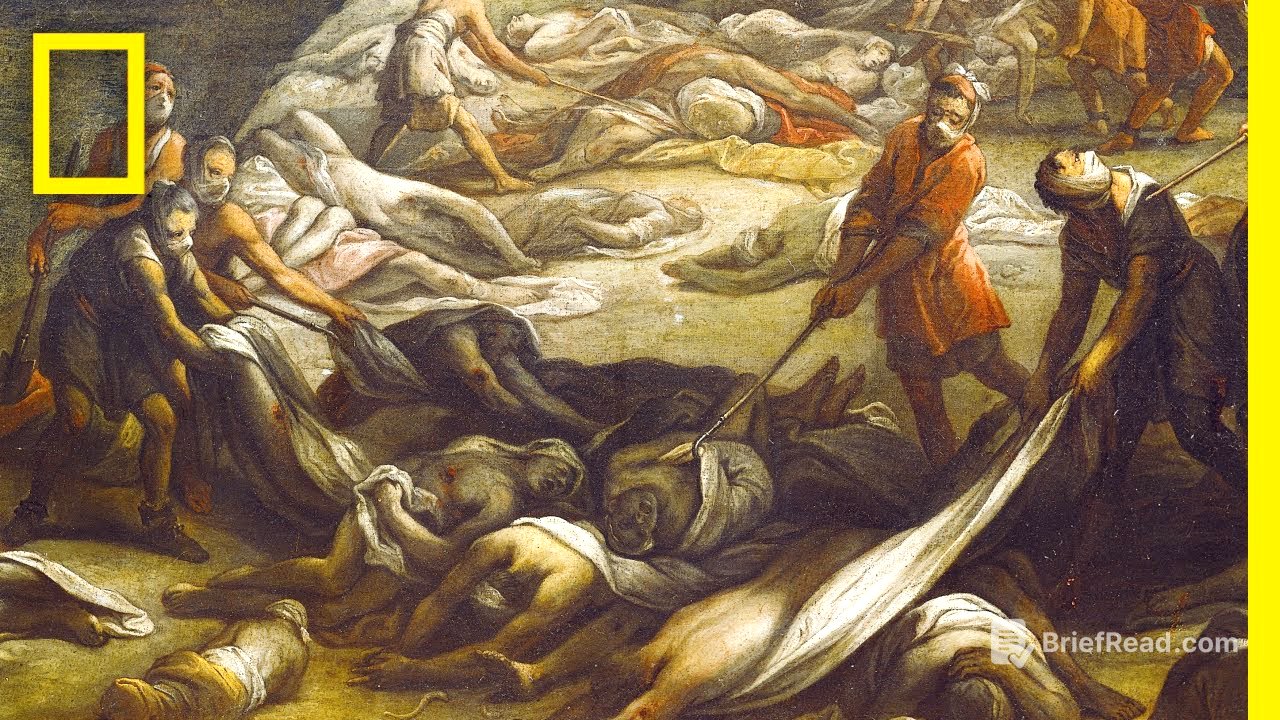TLDR;
This National Geographic video examines how plague pandemics throughout history have driven scientific and social progress. It identifies international trade, urbanisation, and a lack of medical knowledge as key factors in the spread of the disease. The discovery of the bacteria behind the plague led to advancements in microbiology, medicine, urban planning, and sanitation, ultimately leading to the treatment and prevention of the disease.
- Plague pandemics were facilitated by international trade, urbanisation and lack of medical knowledge.
- The Plague of Justinian wiped out about half of Europe's population.
- The Black Death wiped out about a third of Europe's population.
- The discovery of the bacteria behind the plague outbreaks led to advancements in science and public health.
Introduction [0:00]
Plague is known for causing mass sickness and devastation. Despite the tragedy it has caused, the disease has also driven crucial scientific and social progress. Plague is an infectious disease caused by the bacterium Yersinia pestis, primarily affecting rodents and spreading through insects. These insect carriers have passed the plague onto humans with devastating consequences.
Factors Contributing to Plague Pandemics [0:37]
Three major plague pandemics have occurred in human history, sharing similar traits that facilitated the spread of the disease. One cause was the rise of international trade, which connected isolated communities and created large economic networks. However, these trade routes also facilitated the movement of germs. International trade was an impetus for the first plague pandemic, the Plague of Justinian.
The Plague of Justinian [1:14]
In the sixth century, outbreaks began in Egypt and spread throughout the Byzantine Empire via land and sea trade routes. Named after the emperor at the time, the Plague of Justinian is estimated to have wiped out about half of Europe's population.
Urbanisation and Unsanitary Conditions [1:35]
Growing economies also led to urbanisation and rising urban populations, resulting in crowded neighbourhoods and the accumulation of waste, creating unsanitary living conditions. Cities and their residents became incubators for germs and diseases. This was particularly evident in the second and most infamous plague pandemic.
The Black Death [2:01]
In the 14th century, Europe experienced an economic and population boom, especially in cities. Proper waste management did not exist, making cities vulnerable to disease. After trade routes brought plague from Asia, where it killed millions in China and the Middle East, the disease wiped out about a third of Europe's population, earning itself the moniker the Black Death.
Lack of Medical Knowledge [2:32]
The lack of medical knowledge also aided in the transmission of the disease. For most of human history, the cause of illnesses, germs, was unknown, making sicknesses like the plague a mystery. This lack of knowledge drove the spread of disease as recently as the 19th century. Outbreaks in northwest India eventually reached major port cities in China.
The Last Pandemic and Scientific Advancements [2:57]
In just over a century, plague was exported throughout the globe and caused outbreaks in every continent except Antarctica, making it the most widespread pandemic in history. However, this plague pandemic was the last. In 1894, scientists discovered the bacteria behind the plague outbreaks. Their discovery helped further developments in microbiology, medicine, urban planning, and sanitation methods, which led to the treatment and prevention of the disease.
Conclusion [3:32]
Economic expansion, urbanisation, and a lack of medical knowledge contributed to the disastrous spread of plague. In turn, however, the disease helped catapult crucial advancements in science and public health, very well making plague pandemics a thing of the past.









